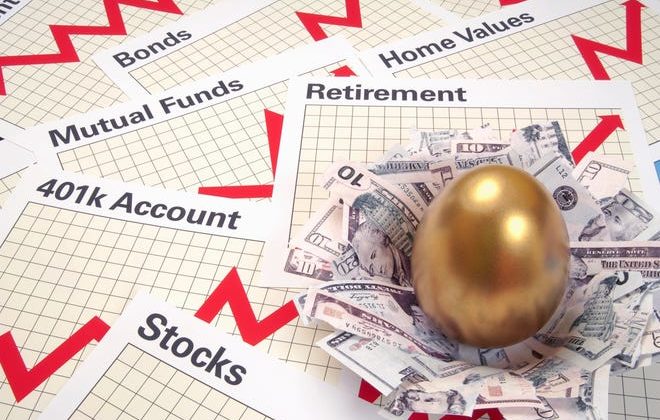
Q. With interest rates low, it is difficult to be a conservative investor these days. I’m thinking of moving some CD money when they mature this summer into dividend-paying stocks. Is that smart? — Kent
A. Kent, one of the most common mistakes people make with investments is to “chase yield.” The yield on an investment is the cash flow paid to the owner divided by the value of the holding. When interest rates are low the temptation to reach for more yield is great. The mistake is a failure to recognize that higher yield means higher risk.
A well-diversified portfolio will include dividend paying stocks. You may already own a fair number of them if you are properly diversified.
Dividend-paying stocks are often touted as a conservative way to invest but they are stocks and should not be counted on to provide the stability an array of CDs or good quality bond holdings have provided. Dividend-paying stocks are every bit as risky as the rest of the stock market. You may get a bigger dividend check from a stock than an interest payment from a CD but the stock’s value can easily drop enough at any time to produce a net loss.
Dividend payments are a voluntary action of a corporation. Management can cut or eliminate dividends at any time. The price of a stock often sink simply on concerns about the company’s prospects even if a cut in the dividend is unlikely but if the dividend is perceived to be at risk, the price of the stock can drop significantly.
More:It’s always the right time of year to ask: When are Roth IRA distributions taxable?
More:Steady deposits in Roth IRA will deliver solid tax-free nest egg in retirement
This is painfully clear in times of economic crisis when the possibility of dividend cuts and actual dividend cuts increase. If you look back at how dividend-paying stocks performed during the 2008-09 financial crisis or the COVID crash last year, you will see they dropped like a stone along with everything else.
If you overload your portfolio with dividend-paying stocks, you will be focusing on just a few industries. Dividend-paying stocks are a minority in the market, and for good reason. Paying dividends is often a sign of a mature company but it can also put a company at a disadvantage in our highly competitive marketplace.

The cash to pay the dividend comes from coffers filled after corporate taxes are paid and the payment of the dividend is not deductible to the corporation. By paying a dividend, that cash is not available to be reinvested in staff, facilities, research, development, marketing or any other activity the company’s management may want to undertake to improve the health of the business.
Unfortunately, there are always people suggesting dividend-paying stocks are dramatically safer than non-dividend-paying stocks or a good substitute for high quality bonds and CDs. That is just not true. Dividend-paying stocks are best used as a portion of your stock holdings in a well-diversified portfolio that aligns with your needs and tolerance for risk.
Dan Moisand, CFP®, is a past national president of the Financial Planning Association and has been featured as one of America’s top financial planners by at least 10 financial planning publications. He can be reached at www.moisandfitzgerald.com or 321-253-5400, ext. 101.Moisand’s comments are for informational purposes only and are not a substitute for personalized advice. Consult your advisor about what is best for you. Some questions are edited for brevity.
